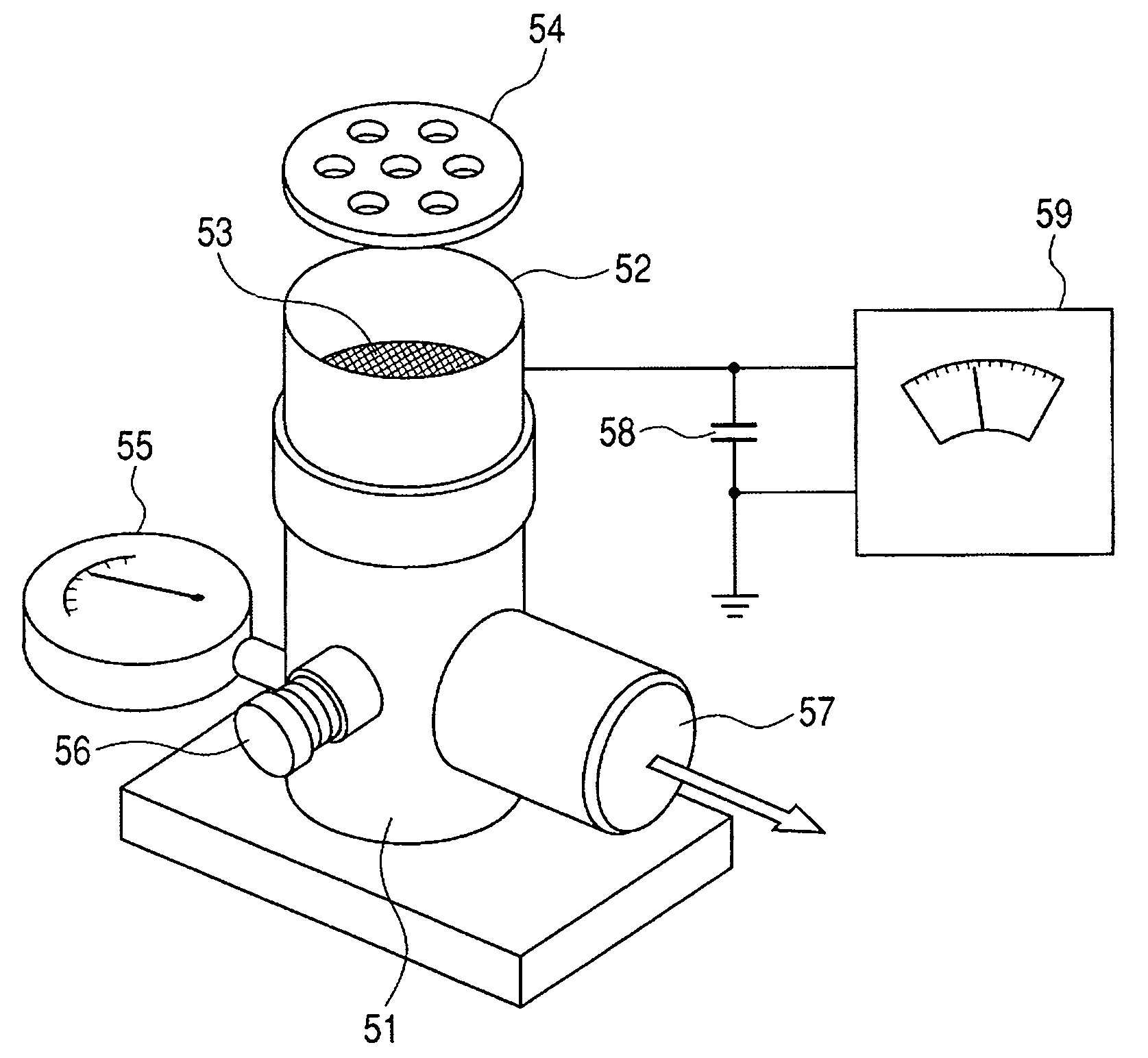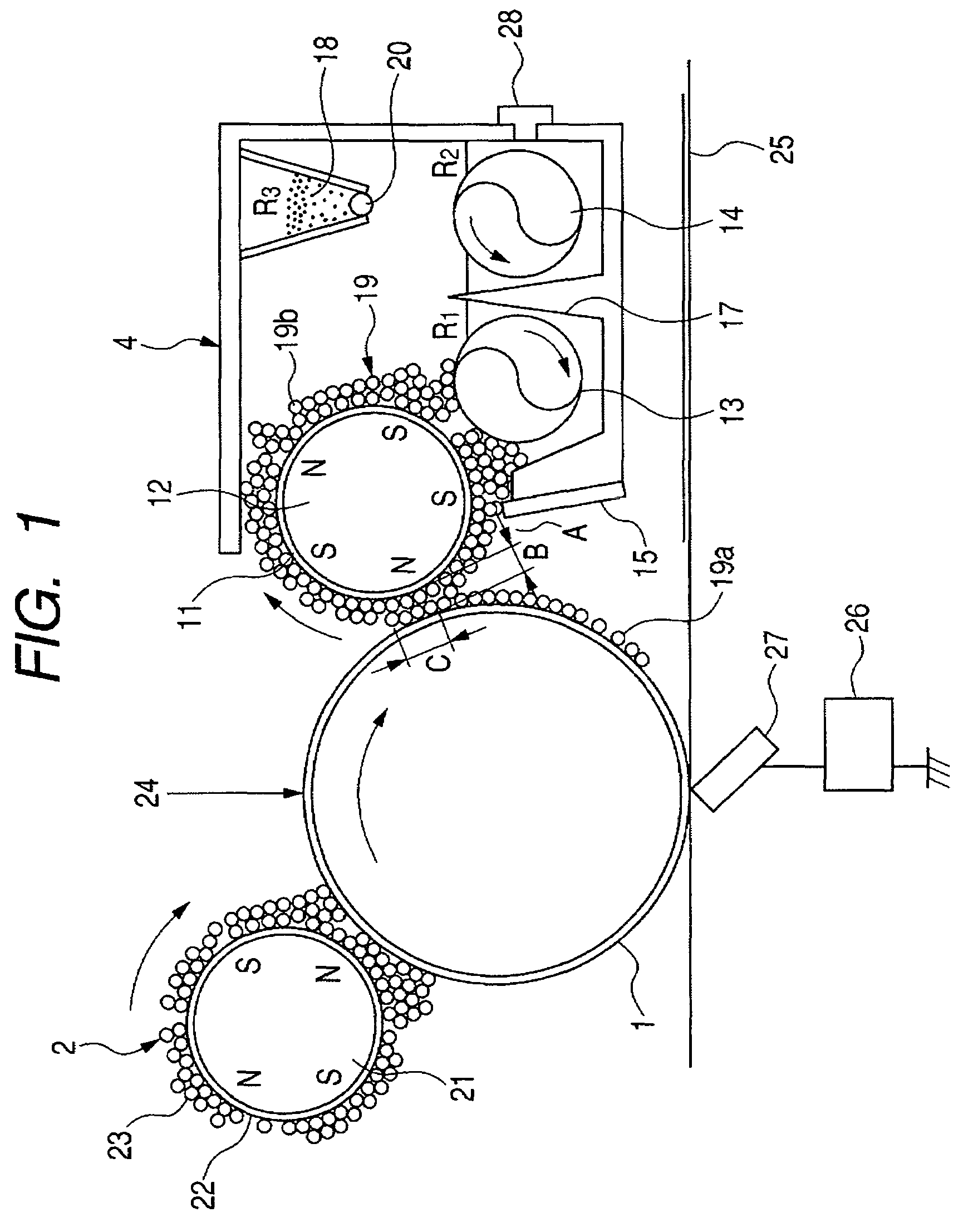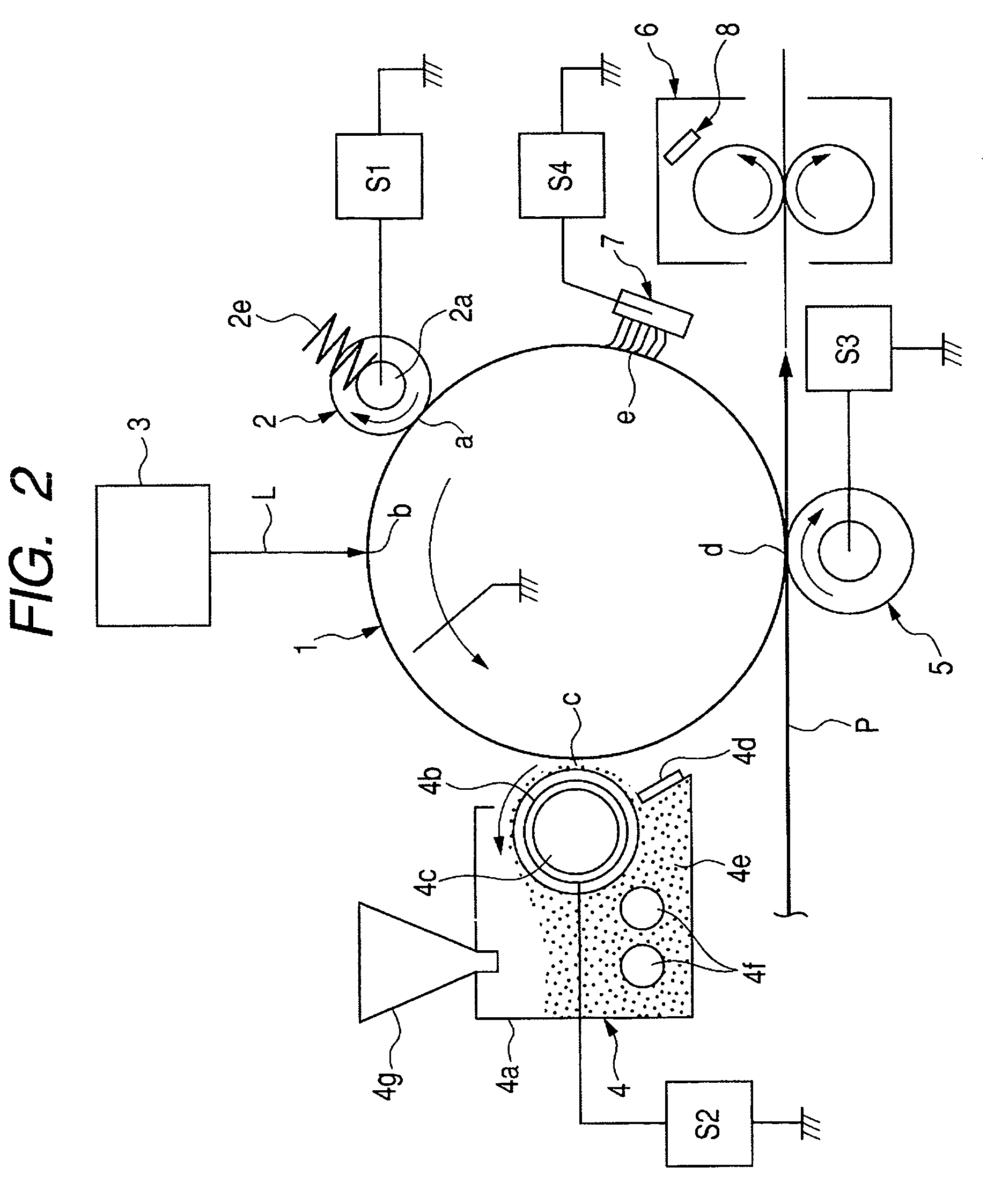Carrier, two-component developer, and image forming method
a two-component, carrier technology, applied in the direction of developers, instruments, optics, etc., can solve the problems of surface wear, affecting the image quality of the member, fog or density drop, etc., to achieve stable image formation, high minuteness, and superior charge-providing performance
- Summary
- Abstract
- Description
- Claims
- Application Information
AI Technical Summary
Benefits of technology
Problems solved by technology
Method used
Image
Examples
example 1
[0248]Carrier 1 (93 parts by weight) and the cyan toner Toner 1 (7 parts by weight) which were obtained as above were blended at 38 rpm for 3 minutes by means of a V-type mixer to prepare Developer 1.
[0249]Next, this Developer 1 was evaluated in the following way. As an evaluation machine, iRC3200 (manufactured by CANON INC.) was used. A 8,000-sheet image reproduction test was conducted using CLC 80 g paper (available from CANON SALES CO., INC.), in a monochromatic mode, in a normal-temperature and normal-humidity environment (23° C / 60% RH; hereinafter also “N / N”) and using an original having a low image area percentage of 3%, to make evaluation, and thereafter a 2,000-sheet image reproduction test was further conducted in the same way but using an original having a high image area percentage of 20%, to make evaluation. The like evaluation was also made in a high-temperature and high-humidity environment (32.5° C. / 90% RH; hereinafter also “H / H”). The evaluation was made by the follo...
examples 2 to 12
[0284]Developers 2 to 12 were produced in the same manner as the production of Developer 1 except that the carriers were changed as shown in Table 3. Evaluation was made in the same way. The results are shown in Table 3.
example 13
[0285]Developer 13 was produced in the same manner as the production of Developer 12 except that the toner was changed as shown in Table 3. Evaluation was made in the same way. The results are shown in Table 3.
PUM
| Property | Measurement | Unit |
|---|---|---|
| particle diameter | aaaaa | aaaaa |
| number-average primary particle diameter | aaaaa | aaaaa |
| number-average primary particle diameter | aaaaa | aaaaa |
Abstract
Description
Claims
Application Information
 Login to View More
Login to View More - R&D
- Intellectual Property
- Life Sciences
- Materials
- Tech Scout
- Unparalleled Data Quality
- Higher Quality Content
- 60% Fewer Hallucinations
Browse by: Latest US Patents, China's latest patents, Technical Efficacy Thesaurus, Application Domain, Technology Topic, Popular Technical Reports.
© 2025 PatSnap. All rights reserved.Legal|Privacy policy|Modern Slavery Act Transparency Statement|Sitemap|About US| Contact US: help@patsnap.com



